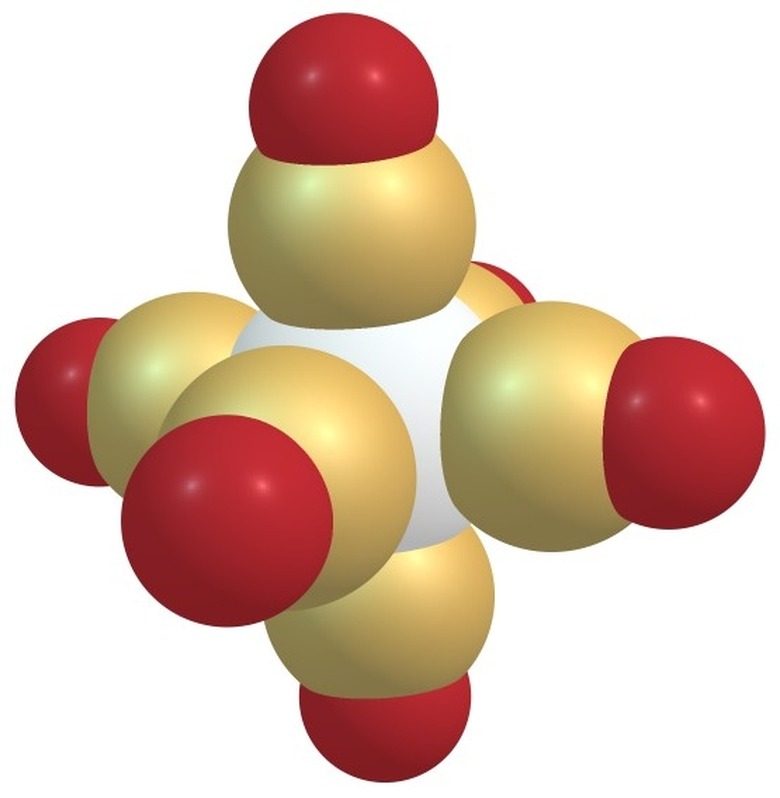What Is A Superscript In A Chemical Formula?
Basic chemical formulas mostly use chemical symbols and subscript numbers. The common water molecule, for example, contains two hydrogen atoms and one oxygen atom and is written as H2O, with the two in subscript. This basic setup, however, does not always tell the entire story. At times, chemical formulas need superscript numbers and symbols to give information about the weight and charge of atoms involved in a chemical reaction.
History
History
Swedish chemist Jons Jakob Berzelius in the early 19th century created the modern system for writing chemical formulas. Under his supervision at the Royal Swedish Academy of Science, students discovered several new elements, including vanadium and lithium, and Berzelius himself discovered several elements and determined the molecular weight of nearly all known elements at the time. To simplify formulas with so many elements, Berzelius created the one- and two-letter symbols to represent elements. At the time, the number of each element in a molecule was indicated by superscript. Today, subscript numbers show the elements' proportions.
Isotopes
Isotopes
Superscript numbers now define isotopes in chemical formulas. Isotopes are varieties of the same chemical element that have different masses. The number of protons, the positively charged subatomic particle, determines the identity of an element. Elements, however, can have different numbers of neutrons, the neutrally charged subatomic particle, and still maintain their elemental identity. Chemical formulas use a superscript number before the element's symbol to indicate the mass of the isotope.
Examples
Examples
Uranium, for example, can have 141 to 146 neutrons, though more than 99 percent of uranium in nature contains 146 neutrons. With 146 neutrons, uranium's atomic weight is 238 atomic mass units, so a superscript 238 before uranium's symbol, U, indicates that isotope. The isotope with 143 neutrons, used in nuclear power and weaponry, is indicated with a superscript 235, to indicate its atomic weight of 235. Formulas for many standard chemical reactions do not use superscript numbers for isotopes when the elements have the common atomic mass, though it would not be incorrect to indicate that in superscript.
Ions
Ions
Chemical formulas also might use superscript after a chemical symbol to identify ions. Ions are atoms or molecules that do not have an equal number of protons and electrons, the negatively charged subatomic particle. This creates an atom or molecule that is either negatively charged, an anion, or positively charged, a cation. A plus or minus sign in superscript after the chemical symbol shows this charge. A number before before the plus or minus sign indicates the level of the charge. For example, a superscript 3+ indicates the ion has three more protons than electrons.
Examples
Examples
As an example, the element copper can exist missing one or two electrons. When it is missing one electron, the copper ion is indicated with a single superscript plus sign following its symbol, Cu. When two electrons are missing, the ion, called cupric, has the symbol Cu followed by +2 in superscript. If a molecule exists as an isotope, the chemical formula indicates this by placing the full molecular formula in brackets followed by the superscript showing the charge.
Cite This Article
MLA
Baker, Michael. "What Is A Superscript In A Chemical Formula?" sciencing.com, https://www.sciencing.com/superscript-chemical-formula-5241600/. 24 April 2017.
APA
Baker, Michael. (2017, April 24). What Is A Superscript In A Chemical Formula?. sciencing.com. Retrieved from https://www.sciencing.com/superscript-chemical-formula-5241600/
Chicago
Baker, Michael. What Is A Superscript In A Chemical Formula? last modified August 30, 2022. https://www.sciencing.com/superscript-chemical-formula-5241600/
